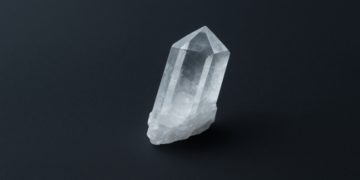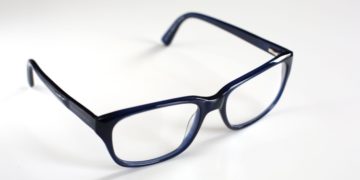The sleek second-skin fit, the daring looks, and the extreme versatility of this material are some of the reasons for the steady rise in the popularity of latex clothing. Whether you are a professional in the field of latex or you are just entering the world of this material, taking care of latex clothes is of utmost importance in order to maintain the fabric’s integrity and aesthetic quality; otherwise, it will soon wear thin. Excellent care should, therefore, be exercised in handling this material if it is to remain long-lived.
This guide will cover some practical advice and guidelines that this fashionable, yet often rather fragile material, might use to prolong the life spans of clothing made up of latex.
1. Apples and Oranges
In its strictest sense, latex is pretty absorbent and, thus, gets easily influenced by the service setups depending on the specific usage. For instance, you are recommended to relax a bit while putting the garments on or off. With special care to apply neither excessive force nor pulling or tugging on the garment, stretching and tearing are likely to take place, mainly along the seams and edges, due to the relative thinness of the materials in those areas.
One of the tricks is always to use a wee bit of silicone-based dressing aid (latex lubricant) to ease the getting on and off. A thin layer of lubricant on your skin or on the inside of the latex garment will reduce the resistance on the carefully fitted garments, thereby sliding easily into tight Hot latex clothing store without straining the latex unduly.
2.Information to extend your Latex lingerie
Of great concern to most latex lovers are not just the materials but also the speedy degradation of latex because of light, warmth, and humidity. To avoid latex degradation, you must store your latex in a dry and cool place out of direct sunlight. Direct sunlight or extreme heat will strip latex of its gloss, brittle it, and hamper its elasticity.
Conserving your latex in cotton, breathable garment bags should be a priority. A plastic bag is a definite no. If possible, these garments should be hung upon padded hangers to keep their shape. However, preferably, the heavier pieces should be stored flat as this allows them to not be stretched.
3.Clean frequently and appropriately
This is perhaps the most salient aspect of prolonging the life of your latex clothing. After use, your latex should undergo the utmost care to be thoroughly washed, free from perspiration and oils and other residues that will compromise its integrity.
For cleaning, use lukewarm water with gentle soap or a specialized latex cleaner. You must at all costs avoid all harsh chemicals or common detergents since they can ruin the material. Submerge the garment in the soapy water, perform a gentle hand wash, and rinse with clean water. Never wring or twist latex to dry; instead, lay it flat on a clean towel and blot dry.
After cleaning, hang the item in the shade to air-dry, away from direct sunlight. Make sure the garment is completely dry before storing to prevent mold and mildew.
4. How to Make Latex Shiny
Shine is one of the most enticing features offered generally by latex outfit, though, it experiences a certain periodical care given to maintain the glitter of shine. Over the course of time, the shine on the latex can fade hence making a shine restore only after the laundry process. You should adopt a silicone-based latex shine that can restore that glossy finish. Spraying sparingly onto the garment surface and gently buffing with a soft cloth or sponge is recommended.
Avoid using oil-based products because oils damage latex. To properly treat latex, you should use only products that are designed to care specifically for latex. They will enhance the appearance of the outfit without deteriorating the latex.
5. Leave Out Metal Contact
Latex and metal do not mix well. Direct contact with copper, brass, and nickel can discolor and stain latex clothing. This is especially important to think about with jewelry, zippers, and even some hangers that may have metal components.
If you own latex clothing with metallic fasteners, make sure they are made from stainless steel or plastic which can’t harm the latex. More importantly, keep latex pieces stored widely apart from metal products that may stain or damage them.
6. Keep Away From Heat and Flames.
Latex is of organic nature; although its durability is high, great sensitivity to heat makes this material anathema. Melting or elastic loss of this material generally occurs once exposed to extreme heat sources, such as hairdryers and radiators or open flames.
This means, ultimately, avoid wearing latex clothing in excessively hot environments, like saunas or direct sunlight on a scorching day; over time, this can weaken the material, making it increasingly subject to damage.
7. Pay Attention to Your Skin Tonic.
The products that are going to be applied to your skin might directly render them unfit for their intended purposes. Body oils, lotions, perfumes, and even deodorants can either spoil or stain the latex; particularly if they contain chemical or alcoholic compounds.
Be sure that your skin is clean and free from any creams or lotions before wearing latex. If you need to use lubricant to help you get into the garment, use a silicone-based product that is compatible with latex. Always check the labels to make sure they won’t ruin your clothes.
8. Stay Clear of Friction
Latex does have its fair share of problems with friction, often ending up damaged over time, especially in areas pertaining to the elbows, knees, and armpits. To offset this, refrain from rubbing or scraping the latex material over rough surfaces. This is even more crucial when one is dancing while wearing latex or is very active.
If you will layer latex or wear anything over it, make sure it is not a fabric that has an unsmooth and abrasive characteristic, one noncatchy and non-scratching to your latex garments.
9. Minor Repairs Must Be Responded to Immediately
With the best care at its disposal, LATEX CLOTHES may still develop small tears, puncture holes, or become simply worn out over time. The core feature of the operational process of extended use of latex is to arbitrarily attend to such minor problems as they arise. Smaller holes or tears may be correctable at home with latex adhesive or some patching, which is normally incorporated in latex repair kits one can buy.
For larger repairs that require some expertise or when the damages seem more extensive, take your latex clothing to a specialist who knows what he is doing in any garment involving fine latex. Just ignore the small damage, and one will find that a worse situation develops as repairs required will be longer-lasting and much more expensive.
10.Regular Inspections and Maintenance
Regular inspections of your latex clothing will allow you to notice any early signs of wear and damage. After each use, inspect your garment for any evidence of stretching, tears, or discoloration. Through early detections of potential threats to the integrity of your garment, you can take preventive remedies before the problem blossoms into a bigger thing.
Every few months, take it out to air out and check on it since you will not be wearing your latex clothing regularly.
Conclusion
Latex clothing is somewhat an investment of a good quality and style, capable of lasting many years with proper care along the way. Though handling them with care, proper storing, cleaning them regularly, and using latex-safe products would keep your latex garments in the best condition possible. The lifesaver toward extending the wear life for latex garments is really proper, because it includes a maintenance routine taken with constant diligence. Thus behold the polish, sheen, and ready-to-wear surface of your pieces waiting for you to pull out for any occasion.











































































